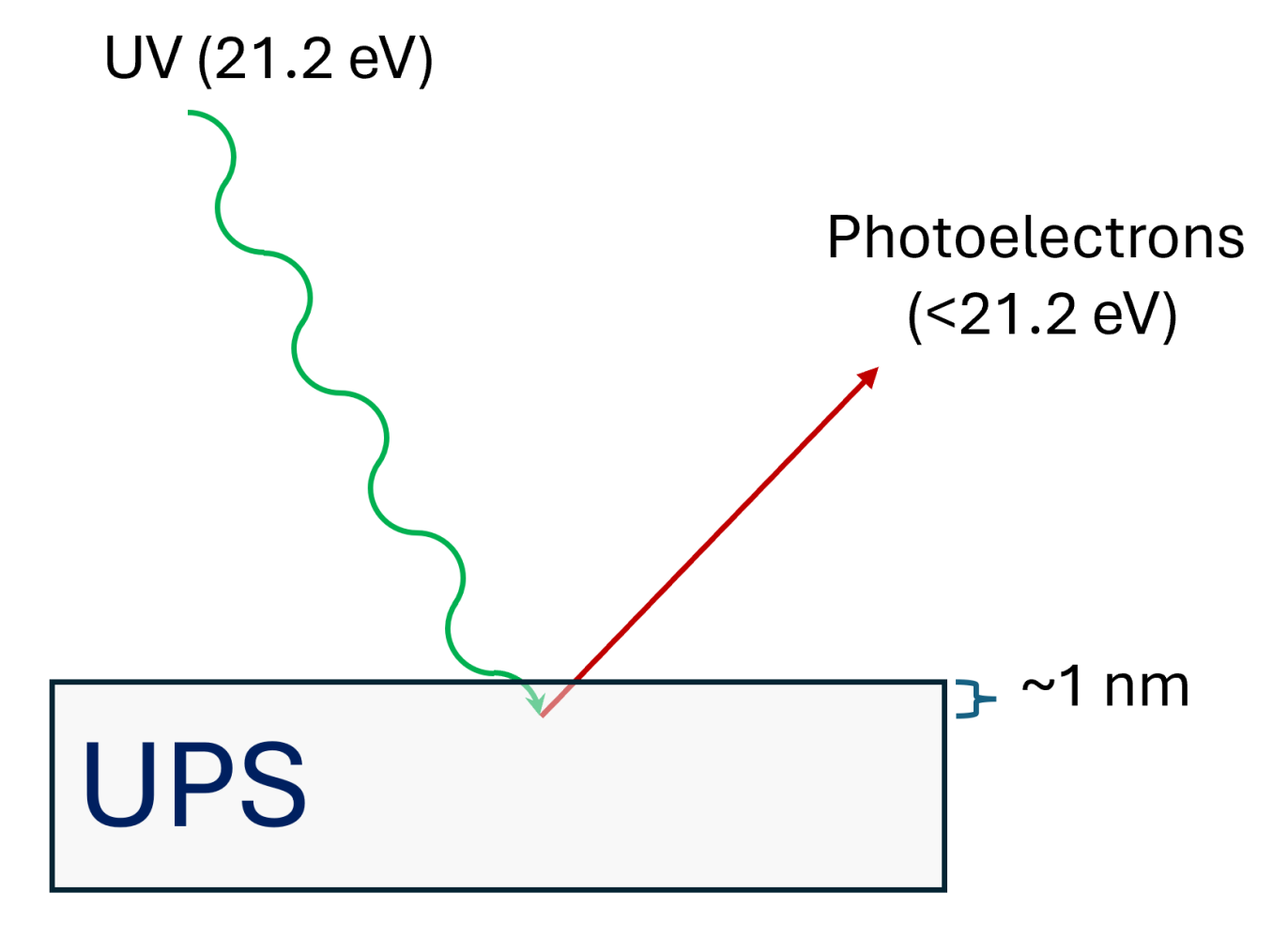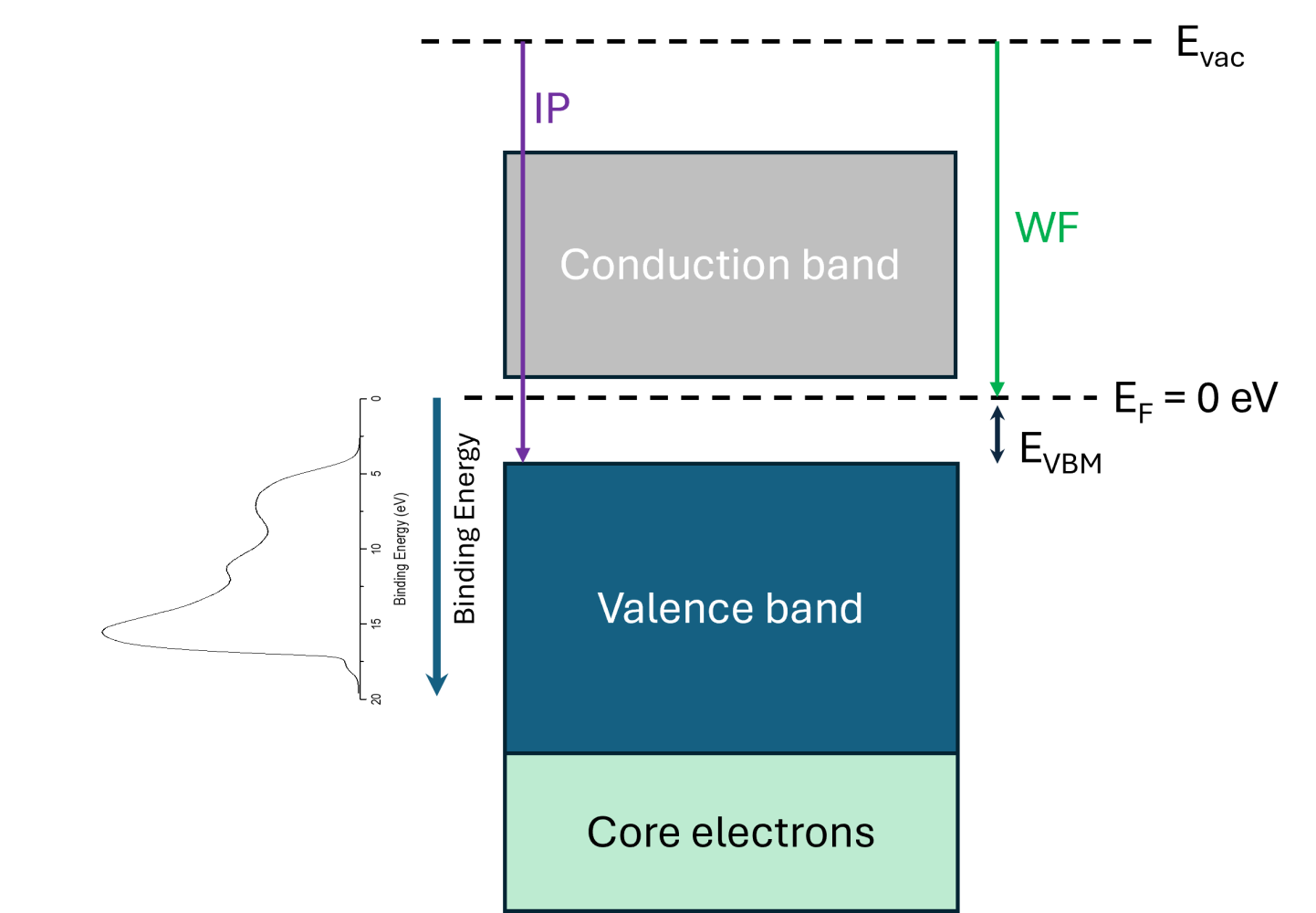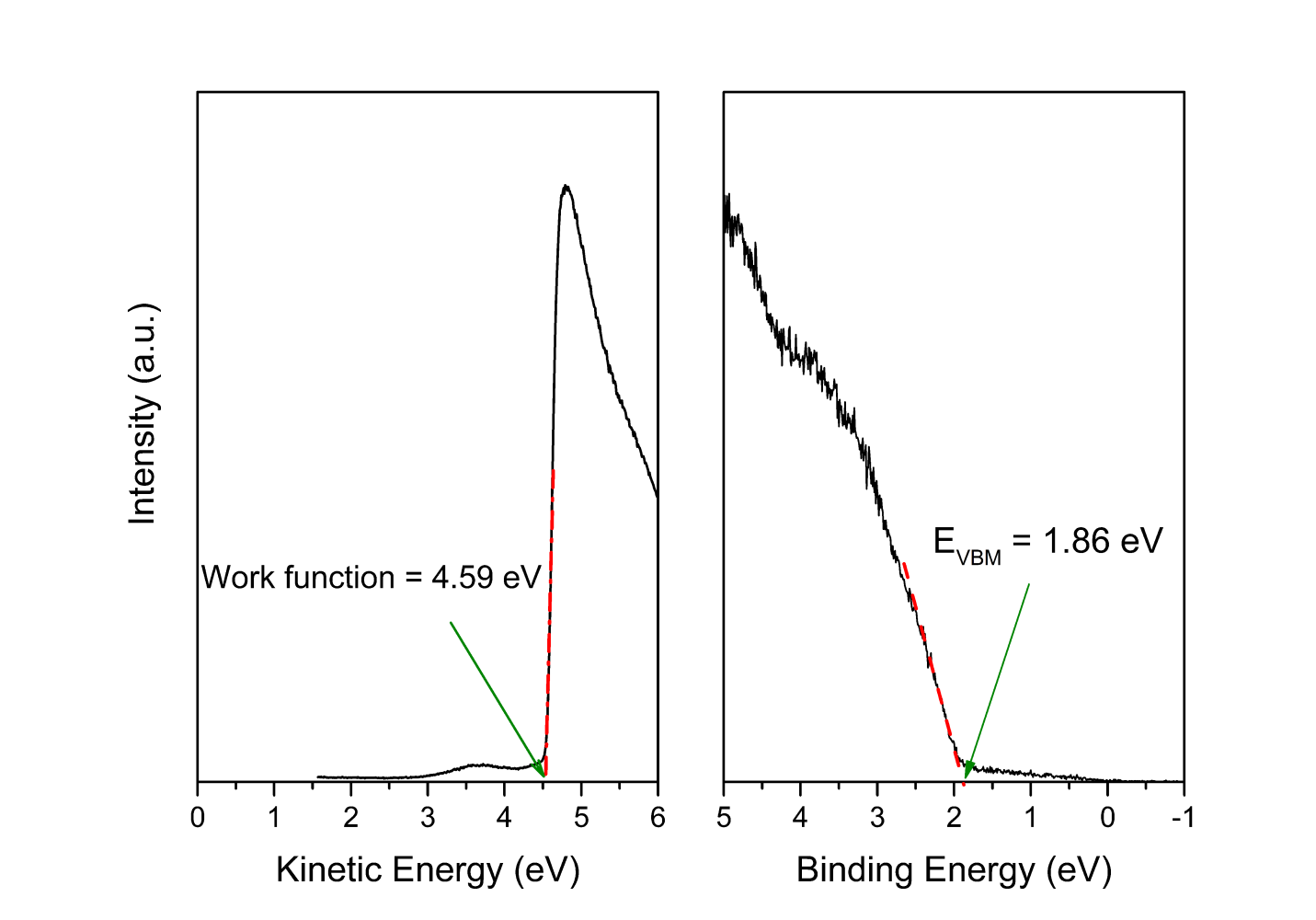Similar to X-ray Photoelectron Spectroscopy (XPS), Ultraviolet Photoelectron Spectroscopy (UPS) is based on the photoelectric effect, but uses much lower energy ultraviolet light (21.2eV) to eject valence electrons from the near-surface (~1nm) of materials. UPS is typically used for studying electronic structure of solids.
Figure 1
Schematic of UPS experiment.

Figure 2
Semiconductor band structure with valence electrons accessible in a UPS experiment showing VBM, WF, and IP.

Figure 3
UPS spectra showing work function (left) and valence band maximum (right) for a halide perovskite solar material.

Information Obtained
- Valence Band Maximum (VBM) = Highest occupied energy state below the Fermi level.
- Work Function = Energy required to remove an electron from the surface.
- Ionization Potential = Energy difference between vacuum level and valence band maximum or minimum energy required to remove a valence electron from the surface.
Sample Requirements
- Generally need a conducting or semiconducting sample that is 3mm X 3mm or larger.
